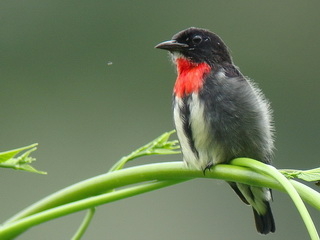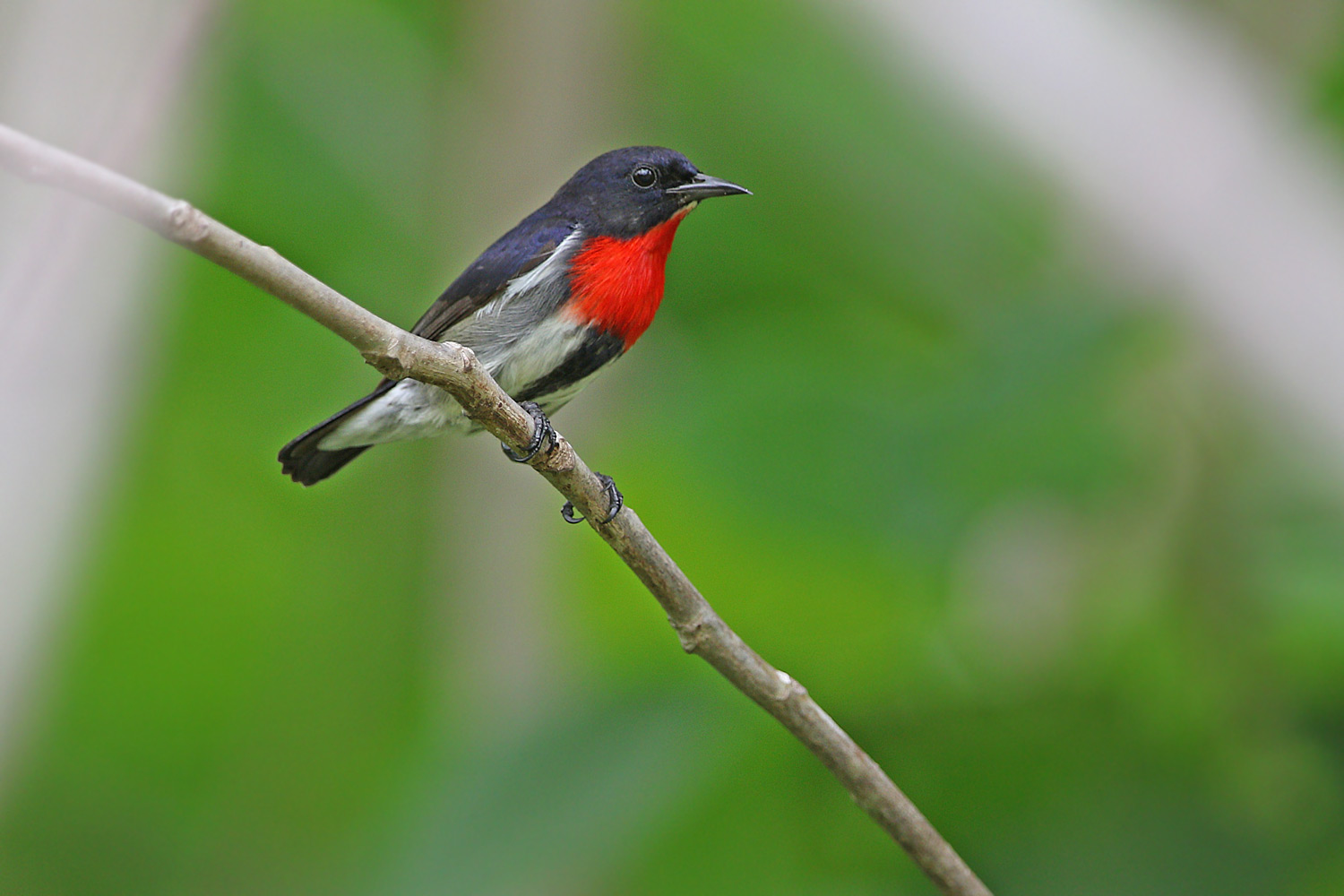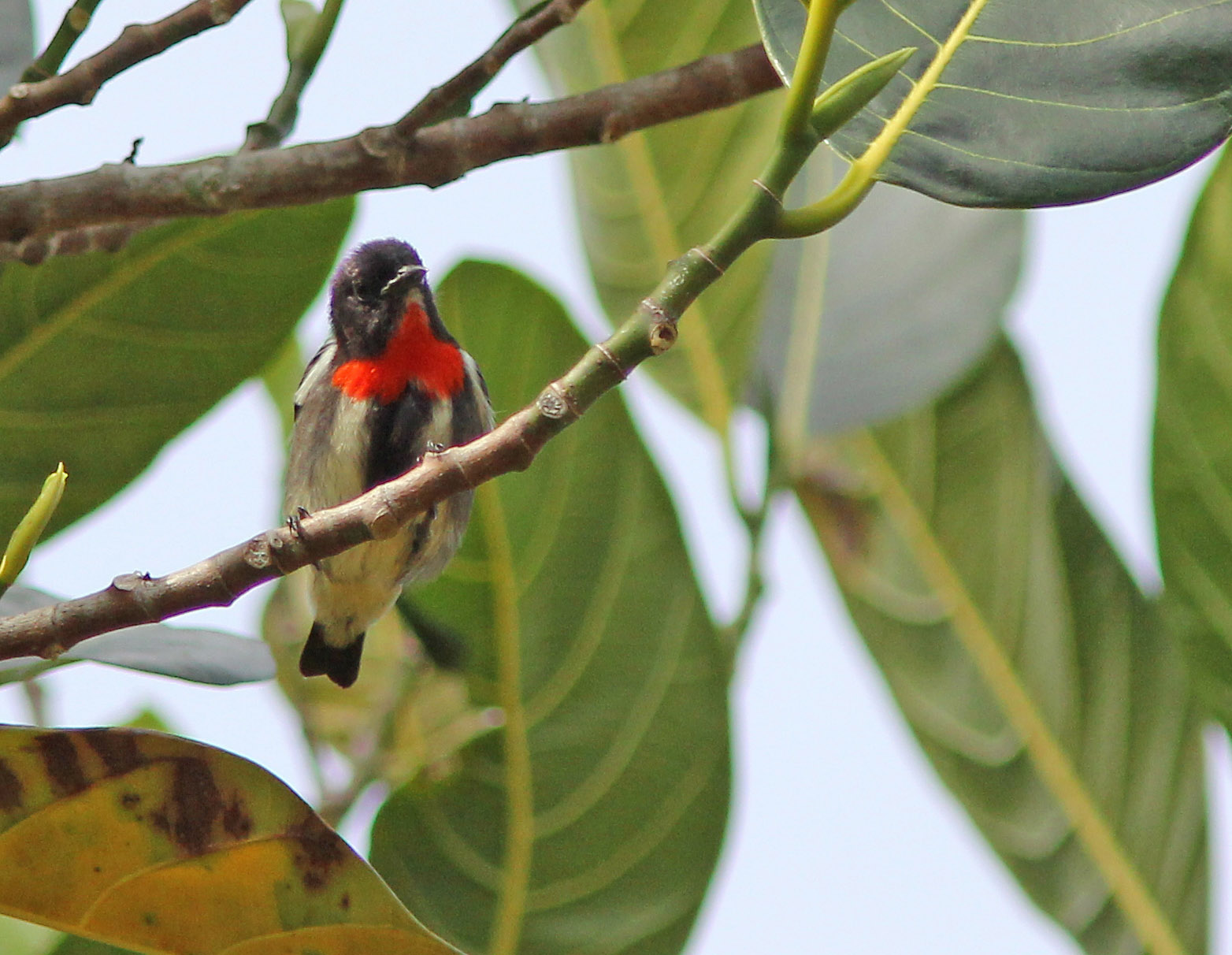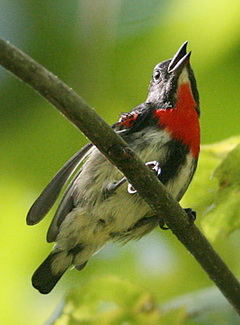
Dicaeum celebicum
TAXONOMY
Dicaeum celebicum S. Mьller, 1843, Celebes. Five subspecies.
OTHER COMMON NAMES
English: Black-sided flowerpecker; French: Dicйe des Cйlиbes;
German: Schwarzwangen-Mistelfresser; Spanish: Pica Flor de
Dorso Negro.
PHYSICAL CHARACTERISTICS
2.4 in (6 cm). Blue-black crown and upperparts with scarlet
throat and breast, grayish sides and pale vents.
DISTRIBUTION
D. c. celebicum: Bangka, Butung, Lembeh, Manadotua, Muna,
Sulawesi, and Togian; D. c. kuehni: the Archipelago of
Tukangbesi; D. c. sanghirense: Sangihe; D. c. sulaense: Banggai
and Sula; D. c. talautense: Talaud.
HABITAT
Varied environments including forests, forest edges, scrub, cultivations,
gardens, and villages from sea level to 3,300 ft (1,000 m).
BEHAVIOR
Holds itself upright and shakes wings before swallowing fruit.
Calls are high-pitched repetitions of unmusical notes and a
series of chirps in flight.
FEEDING ECOLOGY AND DIET
Swallows small fruits of mistletoes and cherries whole, but
larger ones are pierced and the contents squeezed out. Also
takes insects, spiders, nectar, and pollen.
REPRODUCTIVE BIOLOGY
Three white eggs are laid in a nest shaped like a purse with a
slit entrance near the top, sometimes with an overhanging
porch. Made of vegetable down, grass, twigs, leaves, and cobwebs,
the nest is suspended low in a tree.
CONSERVATION STATUS
Not threatened.
SIGNIFICANCE TO HUMANS
None known.
Other popular Animals
Photo Gallery of - Gray-sided flowerpecker




 Animalia Life
Animalia Life